Acknowledgments
 Thanks to Lauries children, Zach, Sarah, and Taylor, for all the time this project took her away from them (not to mention the computer!). She loves you all. To Jeffreys son, Jeremy, who gave Jeff the chance to practice what he preaches on the home front. Much gratitude to Betsy Hoke, who first noticed that Zach was different and who suggested that he might benefit from working with Jeffrey. Thanks to Drs. Daniel Feiten and Marianne Neifert for providing us with a sounding board on Attention Deficit Disorder from the pediatricians perspective. Our heartfelt thanks to Dr. George Dorry of Denvers Attention and Behavior Center for offering us his insights on ADD and visual-spatial thinkers. Dr. Dorry is one of the most brilliant experts in the world in the field of ADD, and were honored that he has lent his enthusiastic support to this book.
Thanks to Lauries children, Zach, Sarah, and Taylor, for all the time this project took her away from them (not to mention the computer!). She loves you all. To Jeffreys son, Jeremy, who gave Jeff the chance to practice what he preaches on the home front. Much gratitude to Betsy Hoke, who first noticed that Zach was different and who suggested that he might benefit from working with Jeffrey. Thanks to Drs. Daniel Feiten and Marianne Neifert for providing us with a sounding board on Attention Deficit Disorder from the pediatricians perspective. Our heartfelt thanks to Dr. George Dorry of Denvers Attention and Behavior Center for offering us his insights on ADD and visual-spatial thinkers. Dr. Dorry is one of the most brilliant experts in the world in the field of ADD, and were honored that he has lent his enthusiastic support to this book.
Thanks to John LeTellier, Barb Ziegler, and Wendy Sisk of Sci-Tech Academy for providing a natural laboratory for Jeffrey to work with students and their teachers. To our research assistant, Heidi Wheat, for her valuable input and comments. To Linda Silverman and Dr. Lynn Hellerstein, who helped provide Jeffrey with various pieces of the puzzle. To Barbara Grogan and Judy Spolum, whose trust in Jeff with their childrens education began his path to this book. To Dorothy Knopper, gifted advocate, for recognizing early on that Jeffrey has a special talent in working with gifted and ADD children, and for helping us spread the word about his methods. To our editor, Becky Saletan, who was always on target with the right suggestions and words of encouragement. To Denise Roy for being an enthusiastic supporter and sounding board. To Lauries parentsJim and Ruth Taylorfor instilling in her a love of writing and a passion for justice. To 850 KOA Radio Talk host Mike Rosen, for his research on educational choices and for his unrelenting attack on the status quo in education. To radio execs Robin Bertolucci, Lee Larsen, and Kris Olinger for their support, encouragement, and No-Doz. And our deepest gratitude to our agent, Faith Hamlin, who was inspired by the premise of this book and helped us take it to a level we never dreamed possible.
JEFFREY FREED , M.A.T., a former teacher, is an educational therapist and consultant who works exclusively with ADD and gifted children. He lives in Evergreen, Colorado, with his wife and child. Visit him on the web at www.jeffreyfreed.com.
LAURIE PARSONS CANTILLO , formerly an award-winning radio reporter, is Program Director of Oprah & Friends Radio on XM Channel 156. She has programmed top-rated news and talk stations in Phoenix and Denver and has written on family issues for The Denver Post and other publications. She lives in Chicago with her family, including a son with ADD, whose experience with Jeffrey Freed was the impetus for this book.

Cover design by Catherine Casalino
Cover photographs Ryan McVay/Getty Images
Register online at www.SimonandSchuster.com for more information on this and other great books.
*Amen, Daniel G. Windows into the ADD Mind: Understanding and Treating Attention Deficit Disorders in the Everyday Lives of Children, Adolescents and Adults . Fairfield, Calif.: Mindworks, 1997.
*Armstrong, Thomas. The Myth of the ADD Child: 50 Ways to Improve Your Childs Behavior and Attention Span Without Drugs, Labels or Coercion . New York: Plume, 1997.
Bloom, Benjamin. Developing Talent in Young People . New York: Ballantine, 1985.
*Brooks, Andre Aelion. Children of Fast-Track Parents: Raising Self-Sufficient Children in an Achievement-Oriented World . New York: Penguin, 1990.
Carnegie Task Force on Meeting the Needs of Young Children. Starting Points: Meeting the Needs of Our Youngest Children. New York: Carnegie Corporation, 1994.
Castellanos, F. Xavier, et al. Quantitative Brain Magnetic Resonance Imaging in Attention-Deficit Hyperactivity Disorder. Archives of General Psychiatry , vol. 53, July 1996.
Chubb, John E., and Terry M. Moe. Politics, Markets, and Americas Schools . Washington, D.C.: Brookings Institution, 1990.
*Cline, Foster, and Jim Fay. Parenting with Love and Logic: Teaching Children Responsibility . Colorado Springs, Colo.: Navpress, 1990.
Cohen, Matthew D. The Limits of Discipline Under IDEA and Section 504. In ADD and Adolescence: Strategies for Success from CH.A.D.D . Plantation, Fla.: Children and Adults with Attention Deficit Disorders, 1996.
Crook, William G. Help for the Hyperactive Child: A Good-Sense Guide for Parents of Children with Hyperactivity, Attention Deficits, and Other Behavior and Learning Problems . Jackson, Tenn.: Professional Books, 1991.
*Davis, Ronald D., and Eldon M. Braun. The Gift of Dyslexia: Why Some of the Smartest People Cant Read and How They Can Learn . New York: Perigee, 1997.
*Dixon, John Philo. The Spatial Child . Springfield, Ill.: Charles C. Thomas, 1983.
*Books of special interest to parents
Dorry, George. The Perplexed Perfectionist. In ADD and Adolescence: Strategies for Success from CH.A.D.D . Plantation, Fla.: Children and Adults with Attention Deficit Disorders, 1996.
*Elkind, David. The Hurried Child: Growing Up Too Fast Too Soon . Reading, Mass.: Addison-Wesley, 1989.
Fowler, Rick, and Jerilyn Fowler. Honey, Are You Listening? How Attention Deficit Disorder Could Be Affecting Your Marriage . Nashville: Thomas Nelson, 1995.
*Gardner, Howard. Frames of Mind: The Theory of Multiple Intelligences . New York: Basic, 1993.
. Multiple Intelligences: The Theory in Practice . New York: Basic, 1993.
Gehret, Jeanne. Eagle Eyes: A Childs View of Attention Deficit Disorder . Fair-port, N.Y.: Verbal Images, 1991.
*Goleman, Daniel. Emotional Intelligence . New York: Bantam, 1995.
*Grandin, Temple. Thinking in Pictures: And Other Reports from My Life with Autism . New York: Vintage, 1996.
*Hallowell, Edward M., M.D., and John J. Ratey, M.D. Driven to Distraction: Recognizing and Coping with Attention Deficit Disorder from Childhood through Adulthood . New York: Touchstone, 1995.
*. Answers to Distraction . New York: Bantam, 1996.
*Hartmann, Thom. Attention Deficit Disorder: A Different Perception . Lancaster, Pa.: Underwood-Miller, 1993.
. ADD Success Stories: A Guide to Fulfillment for Families with Attention Deficit Disorder: Maps, Guidebooks, and Travelogues for Hunters in This Farmers World . Grass Valley, Calif.: Underwood, 1995.
. Beyond ADD: Hunting for Reasons in the Past and the Present . Grass Valley, Calif.: Underwood, 1996.
*Healy, Jane, M.D. Endangered Minds: Why Our Children Dont Think . New York: Touchstone, 1991.
Himmelfarb, Gertrude. A Neo-Luddite Reflects on the Internet. The Chronicle of Higher Education , November 1, 1996.
Isaacson, Walter. In Search of the Real Bill Gates. Time , January 13, 1997.
Johnson, Jean, et al. Getting By: What American Teenagers Really Think About Their Schools. New York: Public Agenda, 1997.
*Kotulak, Ronald. Inside the Brain: Revolutionary Discoveries of How the Mind Works . Kansas City, Mo.: Andrews & McMeel, 1997.
Levine, Louis S. The American Teacher: A Tentative Psychological Description. Available from the ERIC Document Reproduction Service (EDRS), Springfield, Va.
Lou, Hans, et al. Striatal Dysfunction in Attention Deficit and Hyperkinetic Disorder. Archives of Neurology , vol. 46, January 1989.
. Focal Cerebral Dysfunction in Developmental Learning Disabilities. The Lancet , January 6, 1990.
Merrow, John. Reading, Writing and Ritalin. The New York Times , October 21, 1995.

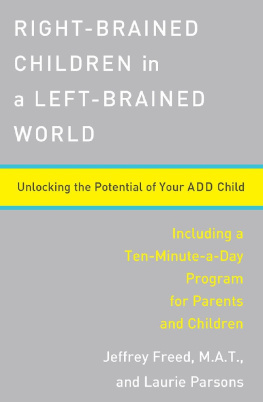
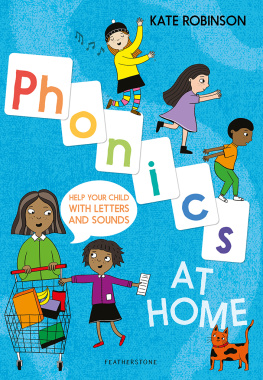
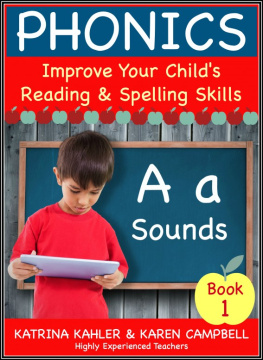






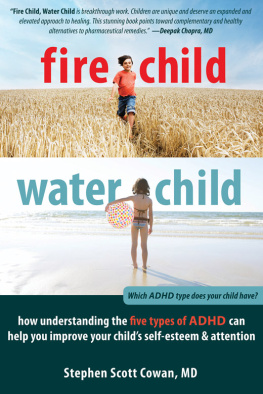
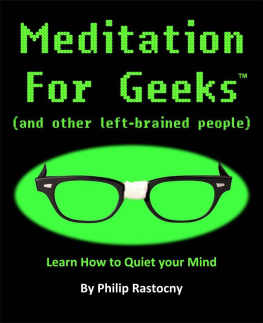
 Thanks to Lauries children, Zach, Sarah, and Taylor, for all the time this project took her away from them (not to mention the computer!). She loves you all. To Jeffreys son, Jeremy, who gave Jeff the chance to practice what he preaches on the home front. Much gratitude to Betsy Hoke, who first noticed that Zach was different and who suggested that he might benefit from working with Jeffrey. Thanks to Drs. Daniel Feiten and Marianne Neifert for providing us with a sounding board on Attention Deficit Disorder from the pediatricians perspective. Our heartfelt thanks to Dr. George Dorry of Denvers Attention and Behavior Center for offering us his insights on ADD and visual-spatial thinkers. Dr. Dorry is one of the most brilliant experts in the world in the field of ADD, and were honored that he has lent his enthusiastic support to this book.
Thanks to Lauries children, Zach, Sarah, and Taylor, for all the time this project took her away from them (not to mention the computer!). She loves you all. To Jeffreys son, Jeremy, who gave Jeff the chance to practice what he preaches on the home front. Much gratitude to Betsy Hoke, who first noticed that Zach was different and who suggested that he might benefit from working with Jeffrey. Thanks to Drs. Daniel Feiten and Marianne Neifert for providing us with a sounding board on Attention Deficit Disorder from the pediatricians perspective. Our heartfelt thanks to Dr. George Dorry of Denvers Attention and Behavior Center for offering us his insights on ADD and visual-spatial thinkers. Dr. Dorry is one of the most brilliant experts in the world in the field of ADD, and were honored that he has lent his enthusiastic support to this book.